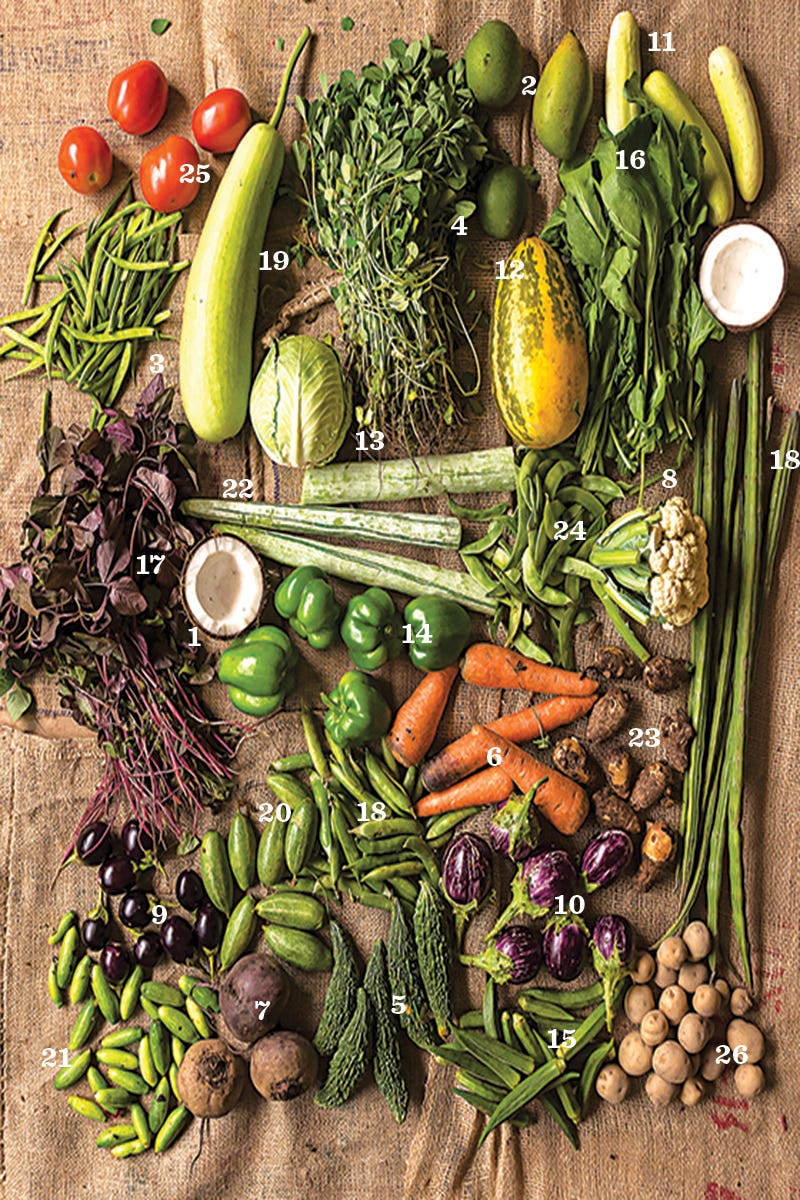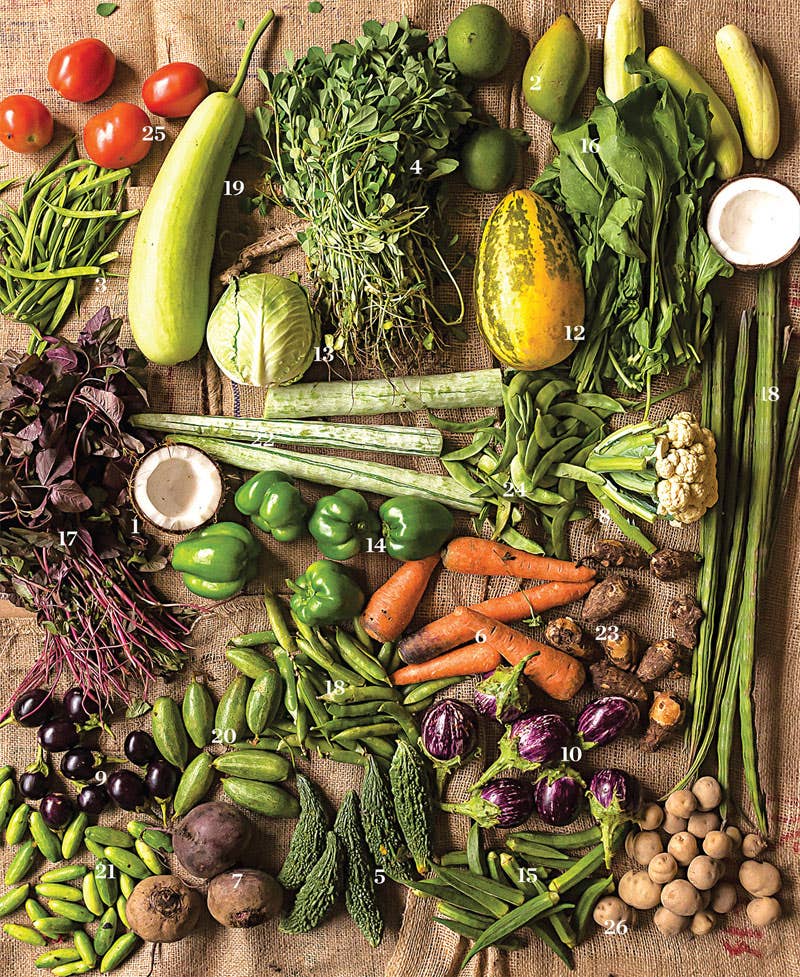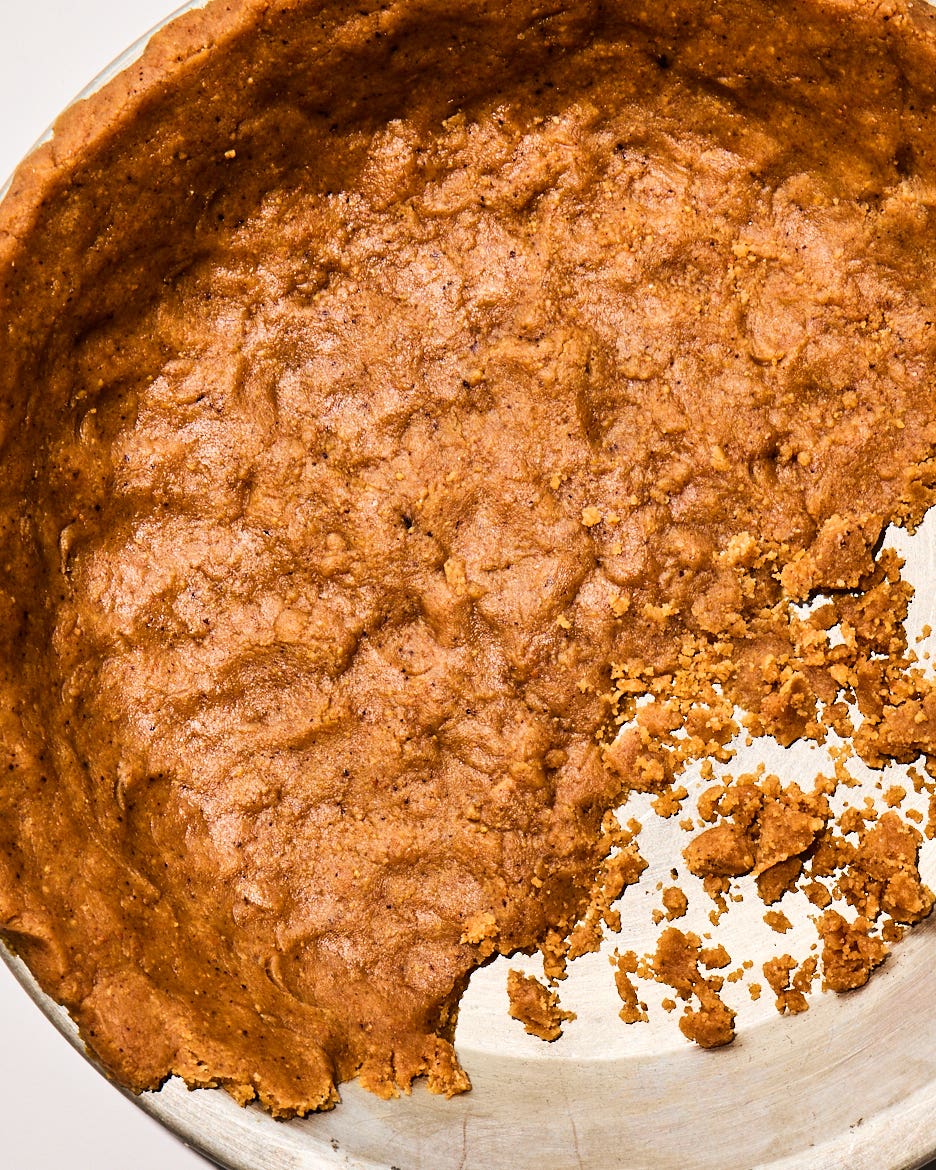

Across India, an assortment of produce is common to kitchens. (1) Coconut is integral in coastal regions, used in sliced, grated, and liquid forms, while (2) green, unripe mangoes are everywhere, cured as pickles and added for tartness in dals and curries. Indian cooks don't shy away from bitter ingredients, such as (3) cluster beans, (4) fenugreek leaves, and (5) bitter melon, salted to mitigate their punch or mixed in with mellower ingredients. Some vegetables are used in both sweet and savory dishes, particularly (6) carrots and (7) beets. Others are ideal for fritters, including (8) cauliflower and eggplants like (9) bharta and (10) rhim jhim. A slew of other vegetables familiar in the West are also popular: (11) Cucumber and the sweeter (12) Indian yellow cucumber are eaten raw, (13) cabbage is shredded and stir-fried, (14) green peppers punctuate pilafs, and (15) okra is beloved fried and stewed. Leafy greens like (16) Indian spinach, an indigenous climbing perennial distinct from the Western plant, and hearty (17) amaranth greens are added to stir-fries and curries. The long pods known as (18) drumsticks are favored in the spicy lentil-based stew sambar. Gourds, including (19) bottle, (20) pointed, (21) ivy, and (22) snake, are prepared in a number of ways: stir-fried, stuffed, or simmered in soups.** (23) Taro root** is fried like potatoes, while (24) flat beans are found in dals and spiced stir-fries. (25) Tomatoes and (26) potatoes, introduced by the Portuguese, have become curry staples.
Keep Reading
Continue to Next Story










